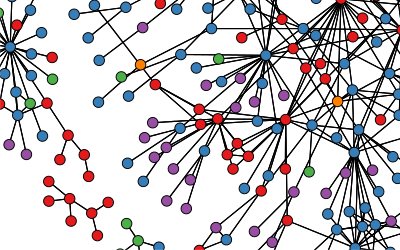
Workshop Schedule, Friday Dec 7th, 2012
Morning session:
| 7:30 | Opening remarks |
| 7:40 | Dave Hunter, Penn State University: Statistical modeling of networks: ERGMs and beyond. 20 minute invited talk. |
| 8:00 | Ulrik Brandes, University of Konstanz: Algorithmic Implications of a Representational Theory of Centrality Measurement. 30 min invited talk with 10 minute discussion led by Carter Butts. |
| 8:40 | Approximating partition functions for exponential-family
random graph models Wen Pu, Eyal Amir, Dorothy Espelage (University of Illinois at Urbana-Champaign) 15 min contributed talk |
| 8:55 | Graph partitioning via balanced label propagation Johan Ugander (Cornell University), Lars Backstorm (Facebook) 15 min contributed talk |
| 9:10 | Coffee break and poster setup |
| 9:30 | Poster session (14 posters). |
| 10:30 | Break and official end of poster session |
Afternoon session
| 15:30 | Pavel Krivitsky, Penn State, and Mark Handcock, UCLA: Partial observations and missing information with social network data. (20 min invited talk) |
| 15:50 | David Kempe, USC: Low-distortion Inference of Latent Similarities from a Multiplex Social Network. 30 min invited talk with 10 min discussion led by David Mount |
| 16:30 | Graphlet decomposition of a
weighted network H. A. Soufiani and E. M. Airoldi (Harvard). 15 min contributed talk |
| 16:45 | Bringing survival analysis to information propagation Manuel Gomez Rodriguez (MPI/Stanford), Bernhard Schölkopf (MPI) 15 min contributed talk |
| 17:00 | COFFEE BREAK |
| 17:20 | David Eppstein, University of California,
Irvine: Windows into Relational Events: Data Structures for Contiguous Subsequences of Edges
20 min invited talk with 10 min discussion led by Dave Hunter |
| 17:50 |
Carter Butts, University of California, Irvine: Challenges and Directions in Modeling Large-scale Networks
30 min invited talk with 10 min discussion led by Ulrik Brandes |
| 18:30 | End of workshop |
Abstracts for Invited talks
Ulrik Brandes, University of Konstanz
Dave Hunter, Penn State
David Eppstein, University of California, Irvine
Abstracts for workshop papers
Hossein Azari Soufiani, Edoardo M. Airoldi, Department of Statistics, Harvard University
Alessandro Rinaldo, Department of Statistics, Carnegie Mellon University
Sonja Petrovic, Department of Statistics, Pennsylvania State University
Stephen E. Fienberg, Department of Statistics, Machine Learning Department, and Heinz School, Carnegie Mellon University
Michael Schweinberger, Department of Statistics, Pennsylvania State University
Lin Yuan, School of ECE, Purdue University
Sergey Kirshner, Department of Statistics, Purdue University
Robert Givan, School of ECE, Purdue University
Michael J. Bannister, Department of Computer Science, University of California, Irvine
Christopher DuBois, Department of Statistics, University of California, Irvine
David Eppstein, Department of Computer Science, University of California, Irvine
Padhraic Smyth, Department of Computer Science, University of California, Irvine
Sebastian Moreno, Computer Science department, Purdue University
Jennifer Neville, Computer Science department, Purdue University
Johan Ugander, Cornell University
Lars Backstorm, Facebook
Ben London, University of Maryland College Park
Bert Huang, University of Maryland College Park
Lise Getoor, University of Maryland College Park
Wen Pu, Department of Computer Science, University of Illinois at Urbana-Champaign, IL, USA
Eyal Amir, Department of Computer Science, University of Illinois at Urbana-Champaign, IL, USA
Dorothy Espelage, Department of Educational Psychology, University of Illinois at Urbana-Champaign, IL, USA
James Foulds, University of California, Irvine
Padhraic Smyth, University of California, Irvine
Manuel Gomez Rodriguez, MPI for Intelligent Systems and Stanford
University
Bernhard Schölkopf, MPI for Intelligent Systems
Simon Heimlicher, University of Massachusetts, Amherst
Marc Lelarge,
INRIA-ENS
Laurent Massoulie, INRA-Microsoft Research Joint Centre
Pavel N. Krivitsky, Penn State University Department of Statistics
Felix Biessmann, Berlin Institute of Technology
Frank C. Meinecke, Berlin Institute of Technology
Matthias L. Jugel, Berlin Institute of Technology
Mikio Braun, Berlin Institute of Technology